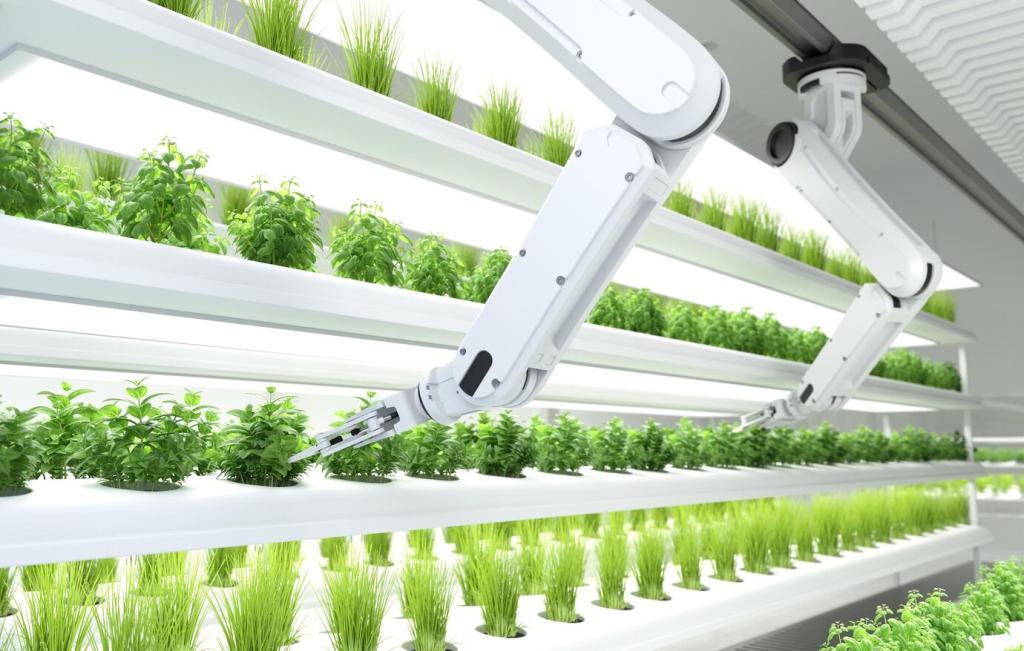Economic Benefits of Embracing Vertical Farming in Cities
Embracing vertical farming in urban environments is revolutionizing the way cities think about food production, employment, and resource efficiency. By utilizing innovative farming methods in densely populated areas, cities can unlock significant economic opportunities. Through reduced transportation costs, increased job creation, and improved food security, vertical farming presents a compelling case for sustainable urban growth. This page explores the multifaceted economic advantages that vertical farming offers to modern cities, delving into aspects such as local investment, market development, operational efficiency, and long-term sustainability.
Stimulating Local Economies
Job Creation and Workforce Development
Vertical farms require a diverse range of skills, from agricultural technicians and plant scientists to marketing and logistics professionals. As more vertical farms open in urban areas, they directly generate employment opportunities, both skilled and unskilled. Additionally, the introduction of these innovative farming businesses encourages educational institutions to offer specialized training programs, preparing a workforce adept in sustainable agriculture and smart technologies. The resulting growth in jobs not only enhances employment rates but also equips city residents with valuable, future-proof skills.
Attraction of Entrepreneurial Investment
The innovative nature of vertical farming draws significant interest from entrepreneurs and investors looking to capitalize on new markets. Urban environments provide ample opportunities for start-ups to test and scale their farming technologies, value-added products, and supply chain innovations. As capital flows into the city’s agricultural sector, local service providers—from construction to software development—see increased demand, thereby multiplying the economic benefit beyond the farms themselves. Ultimately, a thriving vertical farming ecosystem can help position a city as a hub for sustainable agri-tech innovation.
Revitalization of Underutilized Urban Spaces
Many cities possess vacant buildings, abandoned lots, and underutilized rooftops that can be transformed into productive vertical farms. By converting these spaces into agricultural sites, cities increase their real estate value and activate non-productive zones. This revitalization helps rejuvenate neighborhoods, stimulates nearby businesses through increased foot traffic, and creates a sense of community pride. Such transformations signal a city’s commitment to innovation, sparking further investment and development within the urban landscape.

Reducing Food Supply Chain Costs
Traditionally, transporting agricultural goods from rural areas or across borders incurs significant costs in terms of fuel, labor, and handling. With vertical farms situated within urban centers, the distance between producer and consumer is dramatically reduced. This proximity allows for a decrease in transportation-related expenses, fewer logistical challenges, and lower risks of spoilage during transit. The savings realized from streamlined distribution networks can then be transferred to consumers in the form of more competitive prices and can also enhance the profit margins of local businesses.
Strengthening Local Food Supply Chains
By producing fresh food in close proximity to consumers, cities can develop supply chains that are less susceptible to disruption from natural disasters, transportation strikes, or international trade conflicts. Having robust local production capacity allows for a more continuous and reliable food supply even during times of crisis. This resilience helps shield urban economies from the shocks that ripple through conventional supply chains, ensuring that the cost of living remains stable and that consumers are consistently served.
Reducing Exposure to Global Food Price Fluctuations
Global food markets are increasingly affected by factors such as climate change, geopolitical tension, and shifts in commodity prices. Urban vertical farms help buffer cities from these external shocks by enabling self-sufficiency in key produce categories. With less dependency on imports, cities can protect themselves from the volatility of global prices. The resulting price stability benefits both consumers and businesses, contributing to healthier, more predictable economic outcomes.
Enabling Community-Based Food Initiatives
The localized nature of urban vertical farming opens the door for community groups, small businesses, and cooperatives to take an active role in food production. Such empowerment supports grassroots entrepreneurship and fosters the development of inclusive food systems tailored to community needs. When residents can participate in creating their own food economy, wealth is retained and circulated within the community, forging stronger economic and social ties in the urban fabric.
Previous slide
Next slide

Join our mailing list
